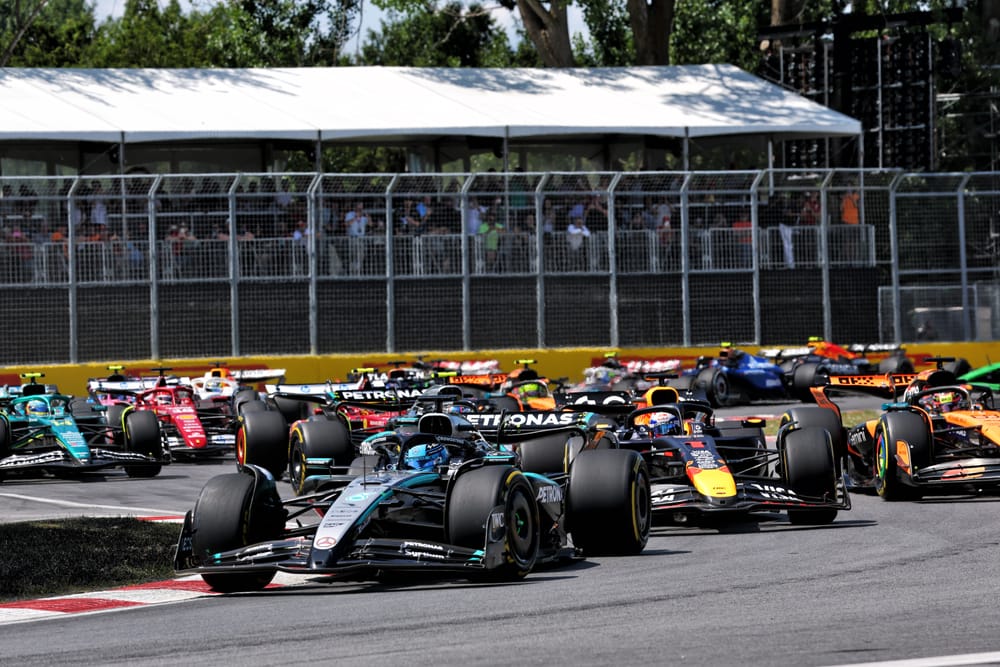Mercedes' first victory of the 2025 Formula 1 season marked a new chapter for the team, as it was a win where cold weather was not a critical factor.
In a rules era where Mercedes has struggled to manage its rear tyre temperatures, previous successes have mostly relied on the temperatures dropping.
That explains why it was so dominant last year in a chilly Las Vegas, or how it won on those inclement afternoons at Silverstone and Spa.
The Canadian Grand Prix was very different though, as Russell’s dominant race victory took place on a blazing hot day where track temperatures peaked in the 50°Cs and Russell's tyre management was as good as anyone else's.
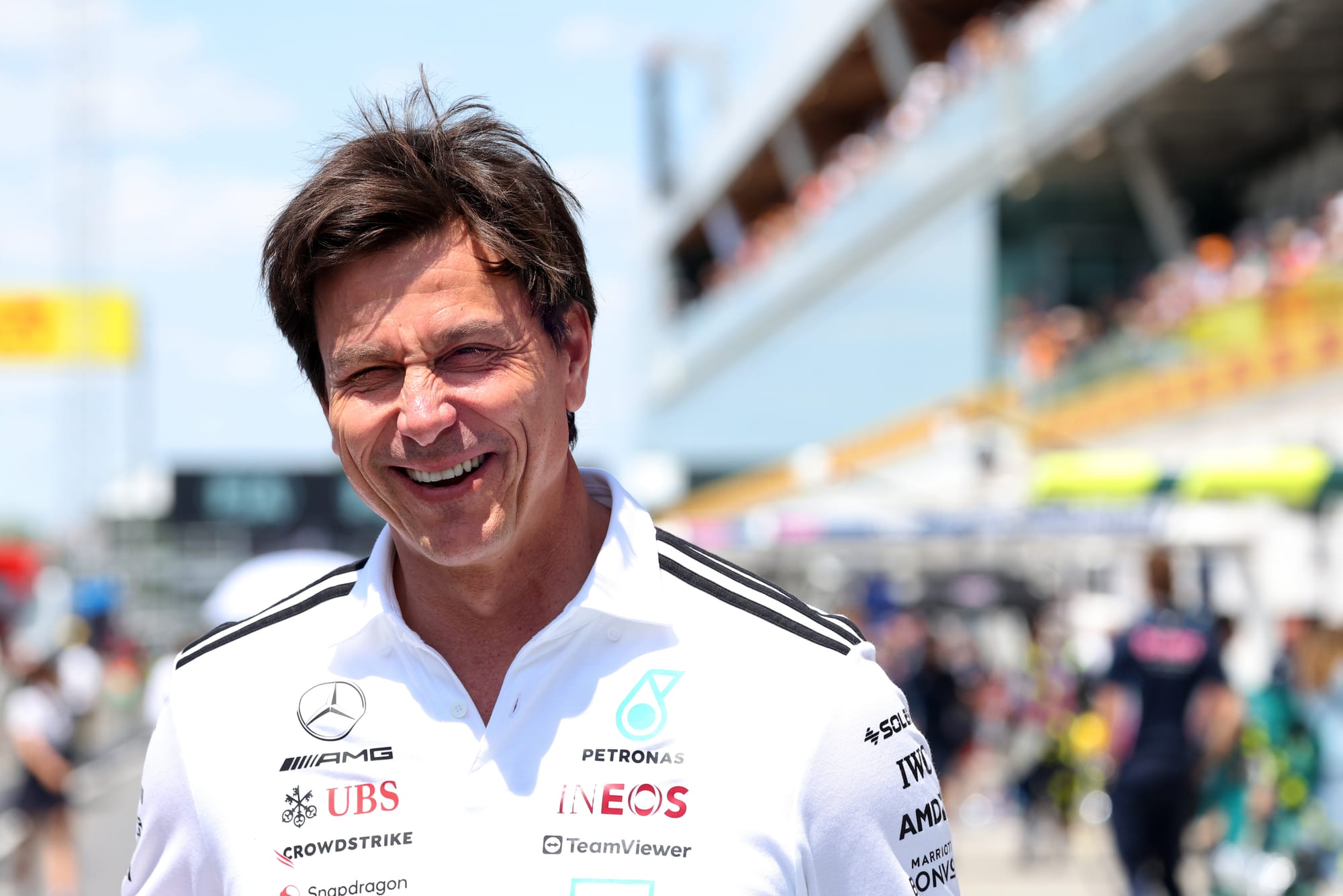
Mercedes boss Toto Wolff pointed out pretty quickly that a form guide of his squad only winning races where he had a jumper on had been ripped up.
"I thought it's when I'm wearing a pullover, there's some kind of correlation with our performances, because that means it's cold," he said. "But 50°C track temperature, and we've been dominant."
Some of the answer comes from the track characteristics, as there are not many long-duration fast (read: high-energy) corners that punish the rubber - so the Mercedes' weakness is not exposed as much.
It is much more about braking and traction zones, and there are long straights that can help cool the rubber down if it does get a bit stressed.
But that does not explain everything for Mercedes, and one factor that could well be critical - but we need to see more races to be sure - is its latest rear suspension configuration that returned to the car in Montreal.
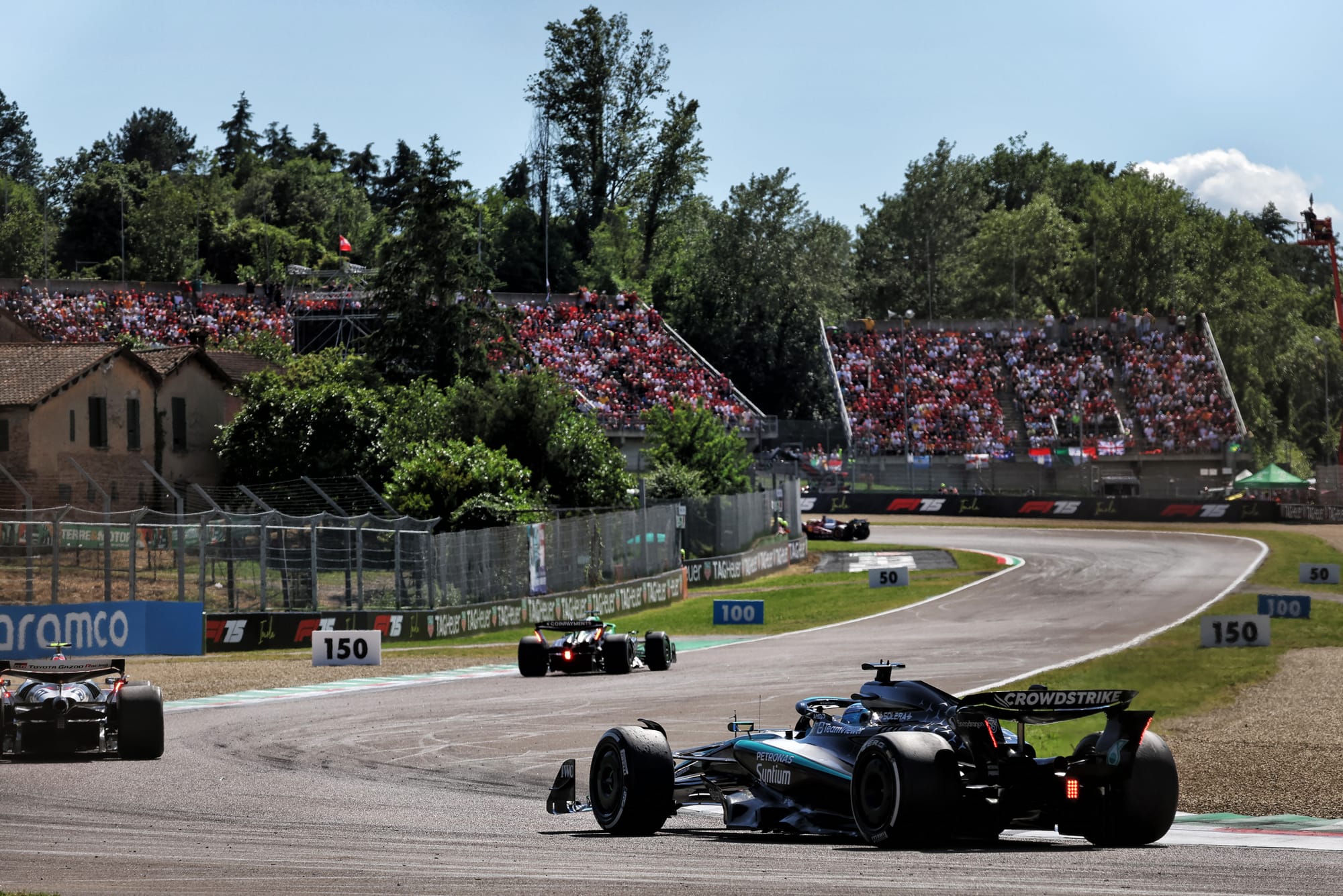
It had first been introduced without fanfare at Imola last month, but it was removed from the W16 straight after the event in the wake of what was a disappointing weekend where both Russell and Kimi Antonelli struggled for pace.
Mercedes was not sure if the difficulties it faced there with tyre management were a consequence of the new suspension configuration, so it did not take it into the following Monaco event.
It was also entirely logical to stick with a platform that it knew well for the streets of Monte Carlo, where success is more about driver confidence in taking things to the limit in qualifying than any thermal race-pace management.
But when Mercedes' old suspension stayed on the car for the Spanish GP everything pointed towards the team having found that perhaps the new version was not delivering what it wanted to do, so may not be something that came back in a hurry.
Mercedes said that work was being carried out on it at the factory before it may return at an unspecified future event.
It seemed unlikely that would be in the near future, especially when Russell delivered a fourth-place finish at Barcelona that offered some hints that the dramatic pace drop-off shown at Imola was a thing of the past.
Fast forward to Canada, however, and the new suspension was back - most interestingly in a completely unmodified form.
That may have seemed unusual for something that had been questioned and sidelined for a while, but there was logic to it.
And chief to it was that the conclusion the team reached post-Imola was that the suspension had not been a contributing factor to its problems there.
Instead, it had been a weekend where the team had failed to get its car into the right set-up window - which may have been influenced in part by the introduction of a new update package elsewhere on the car that included a new front wing and revised front suspension fairings.
That set-up error had led the team down a path where both Russell and Antonelli suffered extreme tyre degradation that would have been there with or without the new rear suspension.
It was this discovery which prompted Mercedes to commit to getting the new version back on the car for Canada - and which certainly contributed to Russell's triumph and a double podium finish, with Antonelli coming home third.
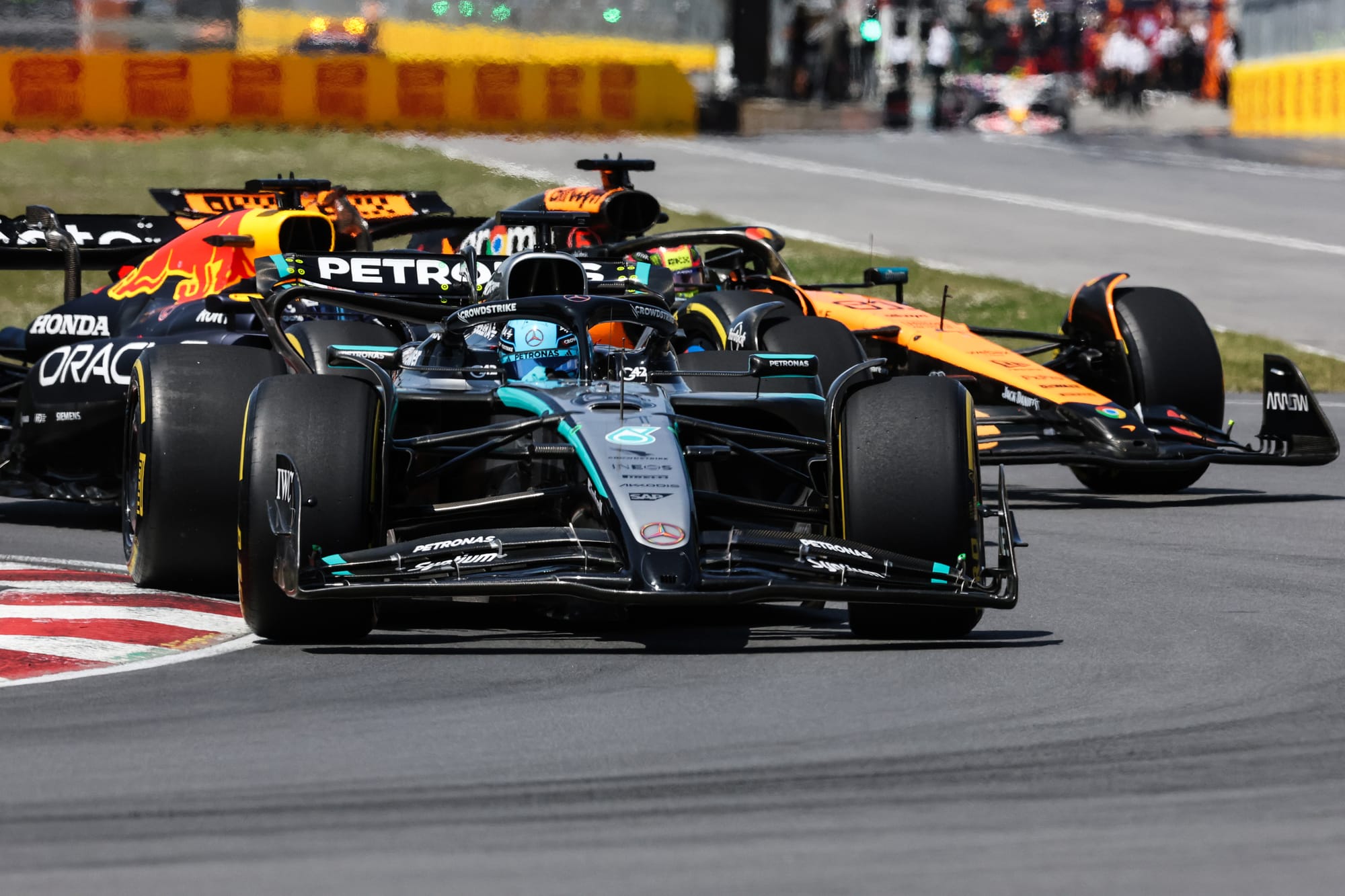
As Wolff explained: "We brought the new rear geometry for that particular problem that we had, the rear surface overheating, but we weren't quite sure about the results in Imola because they were worse than we expected.
"Taking it off, I think, was the right thing to do. As was bringing it on here, because hopefully the development direction is correct."
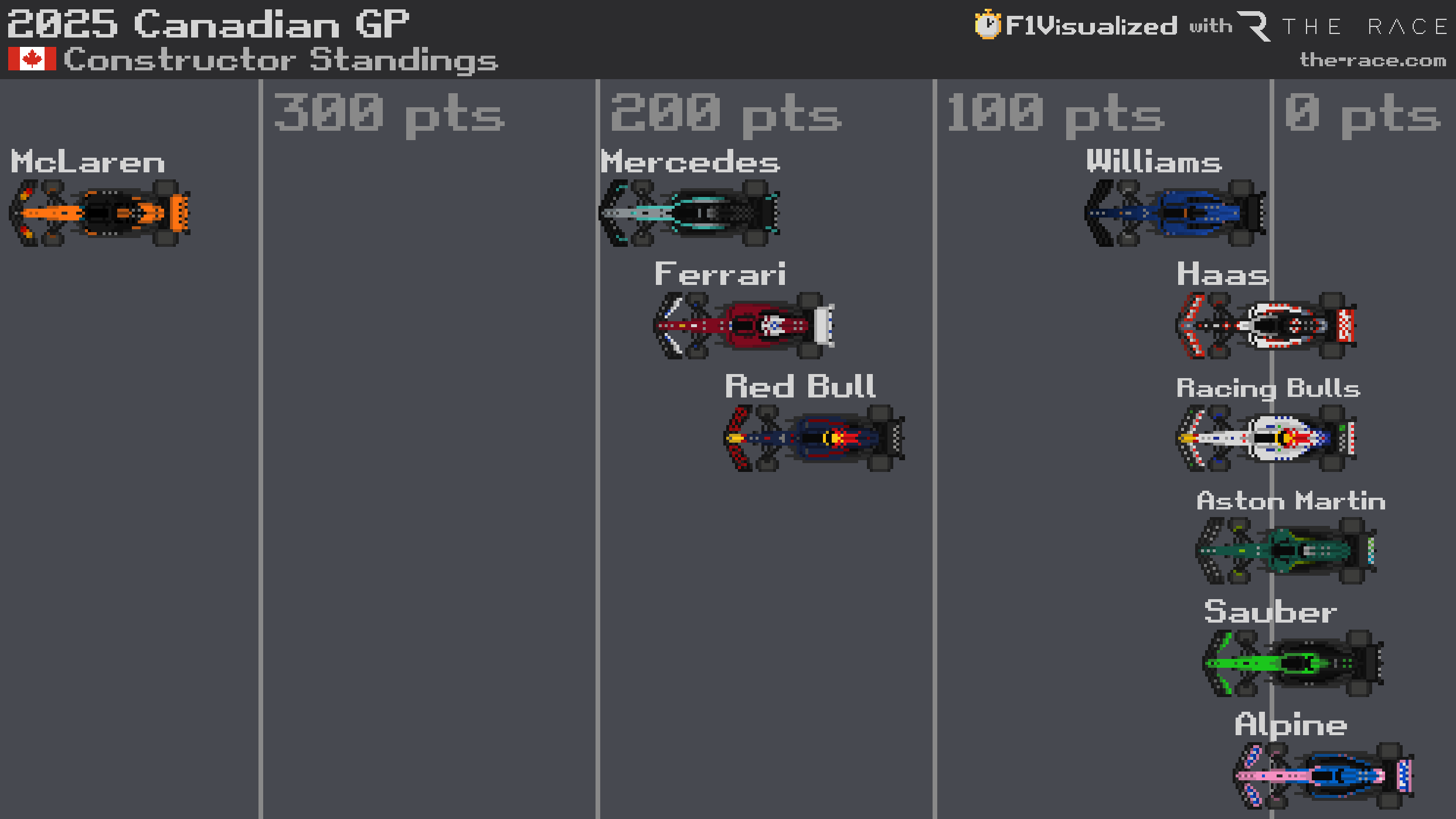
Wolff suggested that one of the difficulties Mercedes faced in its decision-making process was trying to match up the data coming out of the factory with what was happening at the track, something all teams have found quite difficult with the current ruleset.
"It's always with these kinds of regulations, you never know whether you land developments or whether you don't. Correlation has been difficult, particularly for us, but for many other teams," he said.
But while happy with the suspension progress, Wolff did not view it as a single item that is now going to propel Mercedes to win after win whatever the weather conditions.
There are still challenges ahead, and only a strong performance at a high-energy circuit that takes place under a blazing sun will truly prove the worst is behind it.

"There's other factors at play here also," Wolff admitted. "The track layout is just different. The asphalt is different. And there's never one magic solution that makes the car from a, let's say, best case podium car to a dominant winner.
"But the more data sets we have, the more we learn, the better we will understand."
Gary Anderson explains Mercedes' suspension
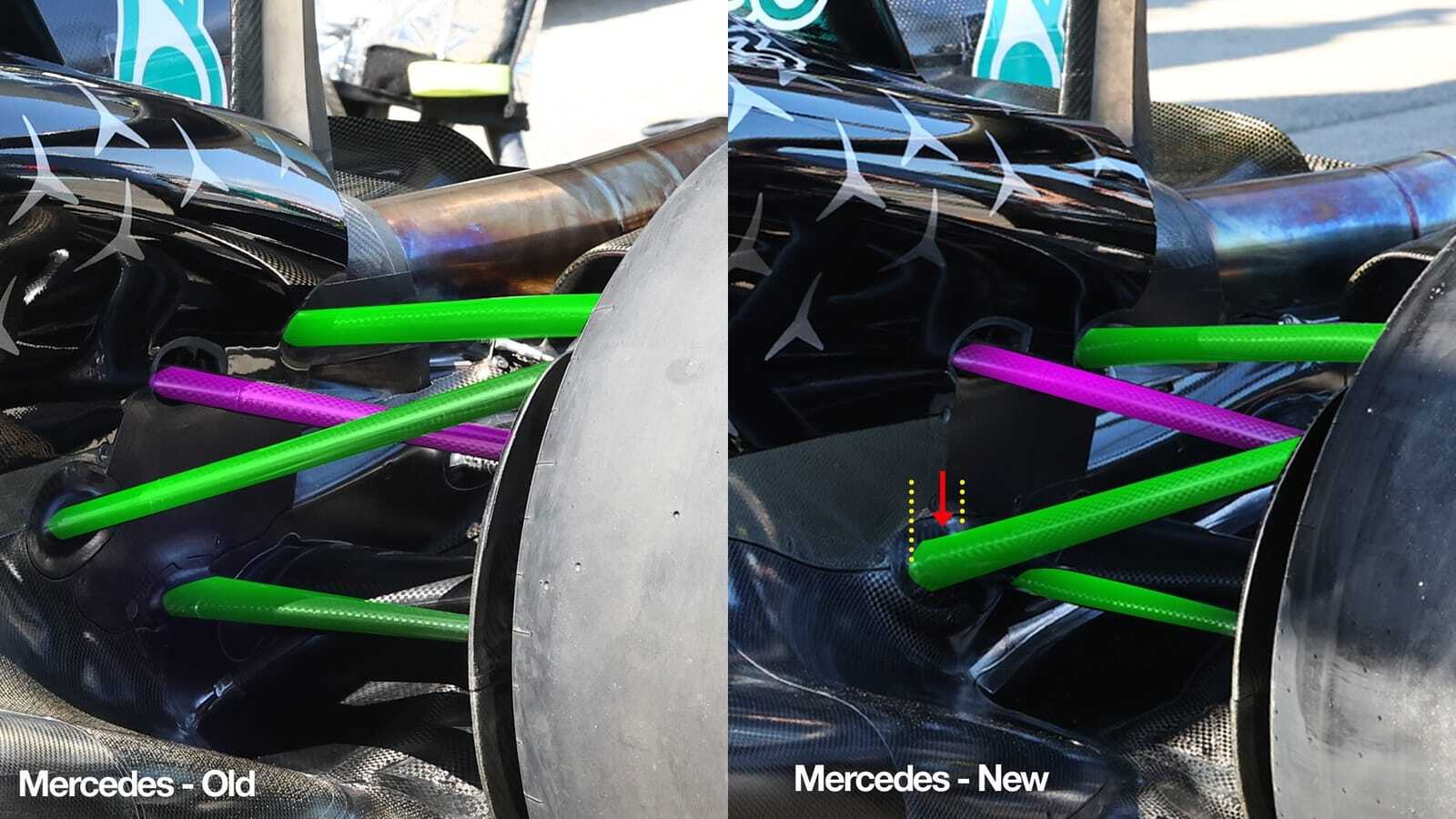
The Mercedes rear suspension upgrade introduced for Imola and then again for Montreal increases the anti-lift on the rear of the car under braking. We often talk about how important it is to run these cars low to the ground, and this helps do exactly that.
I often talk about the weight transfer under braking, which unless you can lower the centre of gravity (CofG) significantly you can't do much about it. But what you can do with these ground effect cars is stabilise the centre of pressure (CofP).
Running more anti-lift on the rear of the car controls the aero platform and in turn controls the CofP, especially at circuits where there are quite a few hard braking episodes, just like Montreal.
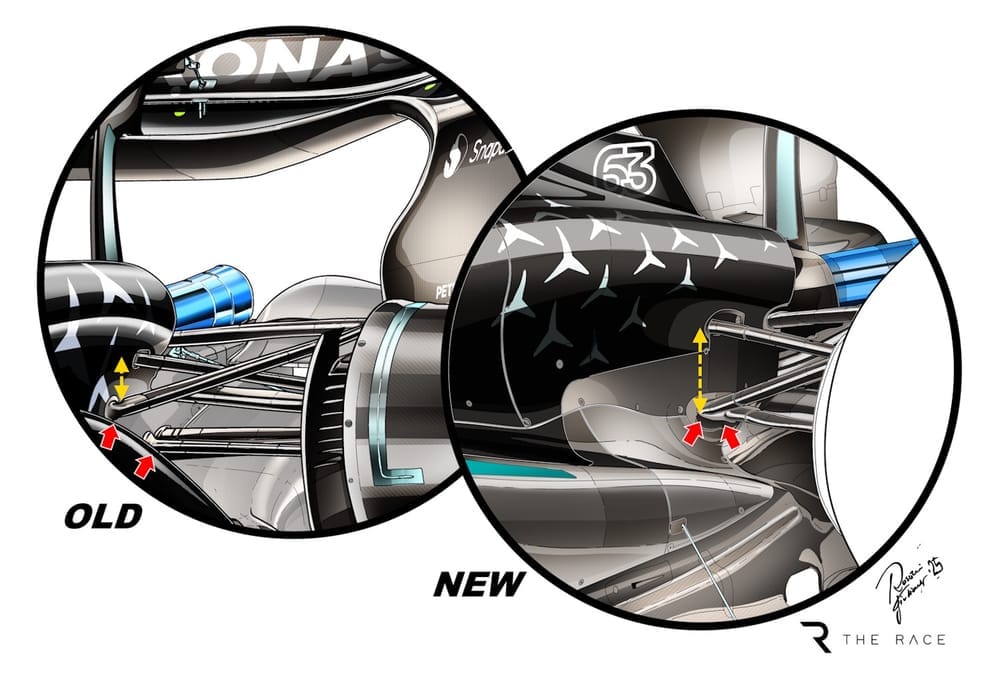
If you can keep more of the aerodynamic load on the rear tyres under braking then you will keep the rear tyres cooler. When you exit the corner and apply the power, the rear tyres will have more grip. This means less wheelspin, which will also reduce the increase in rear tyre temperature. So it's a win-win situation.
There is still more room for development in that area by increasing the pro-squat, which will let the car sit down more under acceleration and again reduce the increase in tyre temperature under acceleration, but that's probably for another day.



